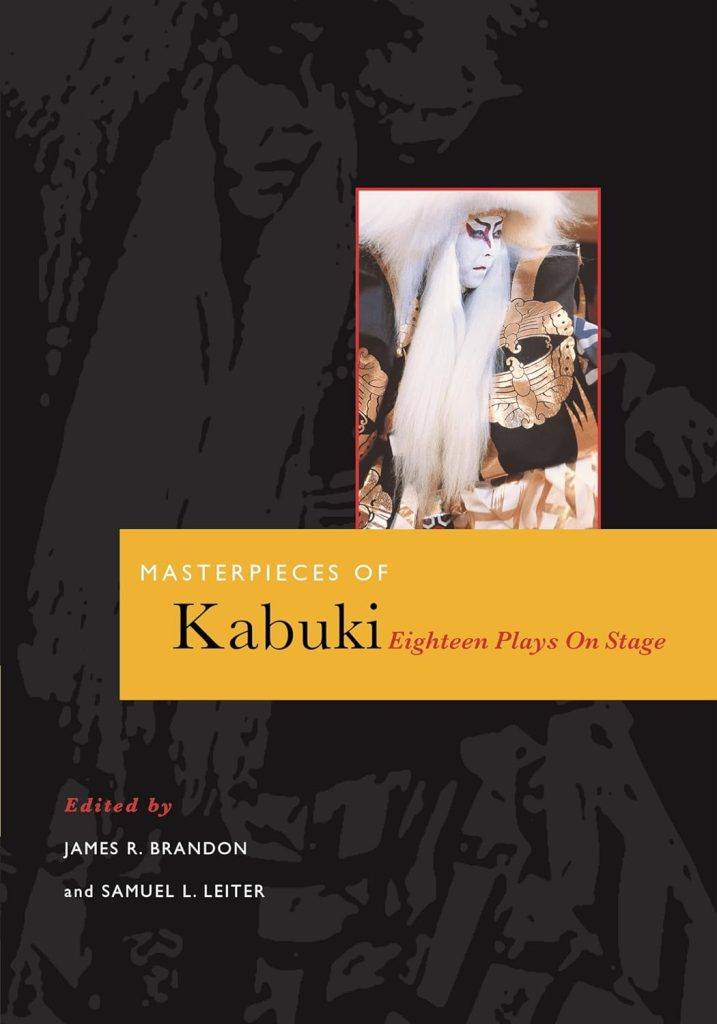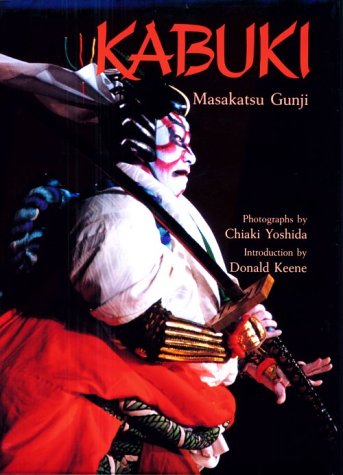Kabuki theatre in Tokyo: a very quick guide
Kabuki, a form of entertainment that originated in the 17th century, combines drama, dance, and music, with performers donning elaborate costumes and expressive makeup. One of the main kabuki theatres in Tokyo, and probably the most tourist-friendly, is Kabuki-za in Ginza. Performances are typically 3-hours long, but it’s possible to see just a single act. This is a popular option for visitors to Japan who don’t speak Japanese. I’ll take you through some of the basic options for viewing kabuki in Tokyo.
Choosing a venue
- Kabukiza Theatre: The most iconic option, offering the full kabuki experience with lavish sets and costumes. Tickets can be pricier and sell out faster Kabukiza Theatre offers one-act tickets called “makumi,” perfect for a taste of the art form without a full commitment.
- National Theatre: Hosts both kabuki and other performing arts, offering a slightly less expensive option with English introductions.
- Shinbashi Enbujo Theatre: A smaller, more intimate theatre with a rich history, offering good value for money.
Purchasing Tickets
- Online: Websites like Kabukiweb offer English interfaces and international payment options.
- Box Office: Purchase tickets in person at the theatre box office during business hours. Some theatres offer same-day standing-room tickets.
- Travel Agencies: Local travel agencies may offer package deals with tickets and cultural insights.
Understanding the Performance
- English Audio Guides: Available at Kabukiza and sometimes other theatres, providing summaries and explanations in English.
- Simplified English Programs: Offer basic plot information and character descriptions.
- Kabuki Apps: Apps like “KABUKI-ZA” offer information and multimedia enhancements.
What to Expect
- Dress Code: Smart casual is acceptable, but avoid overly revealing clothing.
- Etiquette: Applause is customary at scene changes and exciting moments, but avoid talking or using electronic devices during the performance.
- Duration: Performances can last several hours with intermissions. Consider using the facilities during these breaks.
- Food and Drink: Snacks and drinks are not allowed inside the theatre, but concession stands are available in the lobby.
Additional Tips
- Plan your visit: Decide on your theatre, budget, and performance date well in advance, especially for Kabukiza Theatre.
- Learn some basic Japanese phrases: Knowing greetings and thanking gestures can enhance your experience.
- Respect the art form: Kabuki is a deeply traditional art form. Be mindful of cultural differences and enjoy the experience!
- Kabuki-za Gallery: Located within the Kabukiza Theatre, showcasing kabuki history and costumes.
- National Theatre Traditional Performing Arts Information Centre: Offers exhibits and information on kabuki and other traditional arts.
Books about kabuki




I don’t think the title of your article matches the content lol. Just kidding, mainly because I had some doubts after reading the article.
I don’t think the title of your article matches the content lol. Just kidding, mainly because I had some doubts after reading the article.
Thanks for sharing. I read many of your blog posts, cool, your blog is very good.
Your point of view caught my eye and was very interesting. Thanks. I have a question for you.
Your point of view caught my eye and was very interesting. Thanks. I have a question for you.
Thanks for sharing. I read many of your blog posts, cool, your blog is very good.
Your article helped me a lot, is there any more related content? Thanks!
Your point of view caught my eye and was very interesting. Thanks. I have a question for you.
Can you be more specific about the content of your article? After reading it, I still have some doubts. Hope you can help me.
I don’t think the title of your article matches the content lol. Just kidding, mainly because I had some doubts after reading the article.
Thanks for sharing. I read many of your blog posts, cool, your blog is very good.
Thank you for your sharing. I am worried that I lack creative ideas. It is your article that makes me full of hope. Thank you. But, I have a question, can you help me?
Thank you for your sharing. I am worried that I lack creative ideas. It is your article that makes me full of hope. Thank you. But, I have a question, can you help me?
Can you be more specific about the content of your article? After reading it, I still have some doubts. Hope you can help me.
I don’t think the title of your article matches the content lol. Just kidding, mainly because I had some doubts after reading the article.
I don’t think the title of your article matches the content lol. Just kidding, mainly because I had some doubts after reading the article.
Thank you for your sharing. I am worried that I lack creative ideas. It is your article that makes me full of hope. Thank you. But, I have a question, can you help me?
Thank you for your sharing. I am worried that I lack creative ideas. It is your article that makes me full of hope. Thank you. But, I have a question, can you help me?
I don’t think the title of your article matches the content lol. Just kidding, mainly because I had some doubts after reading the article.
Thank you for your sharing. I am worried that I lack creative ideas. It is your article that makes me full of hope. Thank you. But, I have a question, can you help me? https://accounts.binance.com/hu/register?ref=FIHEGIZ8
Your enticle helped me a lot, is there any more related content? Thanks!
I don’t think the title of your article matches the content lol. Just kidding, mainly because I had some doubts after reading the article.
Your point of view caught my eye and was very interesting. Thanks. I have a question for you.
Thanks for sharing. I read many of your blog posts, cool, your blog is very good.
Your article helped me a lot, is there any more related content? Thanks!
Thanks for sharing. I read many of your blog posts, cool, your blog is very good.
Thank you, your article surprised me, there is such an excellent point of view. Thank you for sharing, I learned a lot.
Thanks for sharing. I read many of your blog posts, cool, your blog is very good. http://precio-de-lunc.cryptostarthome.com
I don’t think the title of your article matches the content lol. Just kidding, mainly because I had some doubts after reading the article. http://blockchain-brawlers.cryptostarthome.com
Can you be more specific about the content of your article? After reading it, I still have some doubts. Hope you can help me.
Your article helped me a lot, is there any more related content? Thanks!
Thank you for your sharing. I am worried that I lack creative ideas. It is your article that makes me full of hope. Thank you. But, I have a question, can you help me?
Thank you for your sharing. I am worried that I lack creative ideas. It is your article that makes me full of hope. Thank you. But, I have a question, can you help me?
Thank you for your sharing. I am worried that I lack creative ideas. It is your article that makes me full of hope. Thank you. But, I have a question, can you help me?
Your point of view caught my eye and was very interesting. Thanks. I have a question for you.
Your point of view caught my eye and was very interesting. Thanks. I have a question for you. https://www.binance.info/hu/register?ref=FIHEGIZ8
Your point of view caught my eye and was very interesting. Thanks. I have a question for you. https://www.binance.info/register?ref=P9L9FQKY